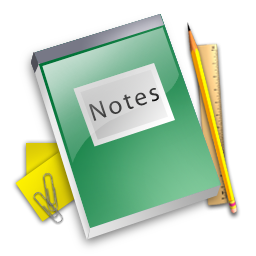Science
CBSE class-9 Science course content for Matter in Our Surrounding, Is Matter around Us Pure, Atoms and Molecules, Structure of the Atom, The Fundamental Unit of Life, Tissues, Diversity in Living Organisms, Motion, Forces and Laws of Motion, Gravitation, Work and Energy, Sound, Why Do We Fall ill, Natural Resources, Improvement in Food Resources. It includes solved sample papers, exam guide, revision notes, test papers, 10 year papers, question banks and online tests.

CBSE, JEE, NEET, CUET
Question Bank, Mock Tests, Exam Papers
NCERT Solutions, Sample Papers, Notes, Videos

myCBSEguide App
Complete Guide for CBSE Students
NCERT Solutions, NCERT Exemplars, Revison Notes, Free Videos, CBSE Papers, MCQ Tests & more.
Download CBSE class 09 Science study material in PDF format. MyCBSEguide provides solved papers, board question papers, revision notes and NCERT solutions for CBSE class 09 Science. The topics included are Matter in Our Surrounding, Is Matter around Us Pure, Atoms and Molecules, Structure of the Atom, The Fundamental Unit of Life, Tissues, Diversity in Living Organisms, Motion, Forces and Laws of Motion, Gravitation, Work and Energy, Sound, Why Do We Fall ill, Natural Resources, Improvement in Food Resources
COURSE STRUCTURE
CLASS IX
First Term(Marks: 90)
Theme: Materials (22 Periods)
Unit I: Matter-Nature and Behaviour
Definition of matter; solid, liquid and gas; characteristics - shape, volume, density; change of state-melting (absorption of heat), freezing, evaporation (cooling by evaporation), condensation, sublimation.
Nature of matter : Elements, compounds and mixtures. Heterogenous and homogenous mixtures, colloids and suspensions.
Theme: The World of the Living (22 Periods)
Unit II: Organization in the Living World
Cell - Basic Unit of life : Cell as a basic unit of life; prokaryotic and eukaryotic cells, multicellular organisms; cell membrane and cell wall, cell organelles and cell inclusions; chloroplast, mitochondria, vacuoles, endoplasmic reticulum, Golgi apparatus; nucleus, chromosomes – basic structure, number.
Tissues, Organs, Organ System, Organism:
Structure and functions of animal and plant tissues (only four types of tissues in animals; Meristematic and Permanent tissues in plants).
Theme: Moving Things, People and Ideas (36 Periods)
Unit III: Motion, Force and Work
Motion: Distance and displacement, velocity; uniform and non-uniform motion along a straight line; acceleration, distance-time and velocity-time graphs for uniform motion and uniformly accelerated motion, derivation of equations of motion by graphical method; elementary idea of uniform circular motion.
Force and Newton's laws : Force and Motion, Newton's Laws of Motion, Inertia of a body, Inertia and mass, Momentum, Force and Acceleration. Elementary idea of conservation of Momentum, Action and Reaction forces.
Gravitation: Gravitation; Universal Law of Gravitation, Force of Gravitation of the earth (gravity), Acceleration due to Gravity; Mass and Weight; Free fall.
Theme: Food (10 Periods)
Unit V: Food Production
Plant and animal breeding and selection for quality improvement and management; Use of fertilizers and manures; Protection from pests and diseases; Organic farming.
PRACTICALS – FIRST TERM
Practicals should be conducted alongside the concepts taught in theory classes.
Second Term (Marks: 90)
Theme: Materials (28 Periods)
Unit I: Matter-Its Nature and Behaviour
Particle nature, basic units : Atoms and molecules. Law of constant proportions. Atomic and molecular masses.
Mole Concept : Relationship of mole to mass of the particles and numbers. Valency. Chemical formula of common compounds.
Structure of atom: Electrons, protons and neutrons; Isotopes and isobars.
Theme: The World of the Living (23 Periods)
Unit II: Organization in the Living World
Biological Diversity: Diversity of plants and animals - basic issues in scientific naming, basis of classification. Hierarchy of categories / groups, Major groups of plants (salient features) (Bacteria, Thallophyta, Bryophyta, Pteridophyta, Gymnosperms and Angiosperms). Major groups of animals (salient features) (Non-chordates upto phyla and chordates upto classes).
Health and Diseases: Health and its failure. Infectious and Non-infectious diseases, their causes and manifestation. Diseases caused by microbes (Virus, Bacteria and Protozoans) and their prevention; Principles of treatment and prevention. Pulse Polio programmes.
Theme: Moving Things, People and Ideas (24 Periods)
Unit III: Motion, Force and Work
Floatation: Thrust and Pressure. Archimedes' Principle; Buoyancy; Elementary idea of Relative Density.
Work, energy and power: Work done by a Force, Energy, power; Kinetic and Potential energy; Law of conservation of energy.
Sound: Nature of sound and its propagation in various media, speed of sound, range of hearing in humans; ultrasound; reflection of sound; echo and SONAR.
Structure of the Human Ear (Auditory aspect only).
Theme: Natural Resources (15 Periods)
Unit IV: Our Environment
Physical resources : Air, Water, Soil.
Air for respiration, for combustion, for moderating temperatures; movements of air and its role in bringing rains across India.
Air, water and soil pollution (brief introduction). Holes in ozone layer and the probable damages.
Bio-geo chemical cycles in nature: Water, Oxygen, Carbon and Nitrogen.
PRACTICALS – SECOND TERM
Practicals should be conducted alongside the concepts taught in theory classes.

myCBSEguide
Trusted by 1 Crore+ Students

Test Generator
Create papers online. It's FREE.

CUET Mock Tests
75,000+ questions to practice only on myCBSEguide app
 myCBSEguide
myCBSEguide





